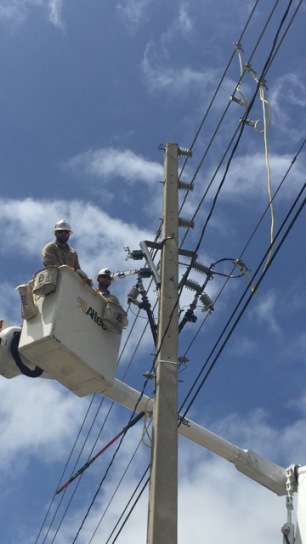A gap funding proposal for economic development projects will go back for more work after a discussion on Monday night at the Unified Government Economic Development and Finance Committee.
After earlier committee discussions, a gap funding policy was brought forward on Monday night. However, UG commissioners had different views of it and requested more work on it. UG Administrator Doug Bach said the staff will work on policy changes and bring a revised proposal back to the committee.
The urban development gap fund was described as a source of UG funds that would be available for desired and needed economic development projects that required from $100,000 to $1 million in additional financing. Private and usual public incentives would not be available for these projects. The projects that qualified would only be in the eastern part of the county, in designated Neighborhood Revitalization Areas.
Under the proposal presented by acting UG economic development director Jon Stephens on Monday night, a list of requirements was set out for projects to be eligible to be considered for gap funding. Under the rules, the borrower would pay back to the UG all the money that goes into the gap fund. In addition, the majority of the financing would be private, and it would be on a 5-, 10-, 15- or 20-year term. Soft costs of the project could not exceed 30 percent of the total project cost, and changes of more than 10 percent to the cost estimate would have to be approved by the administrator under the proposed rules.
Also, gap funding could not be used for operating expenses, equipment purchase or marketing, according to the proposed guidelines. Projects would adhere to minority hiring guidelines.
If used for single-family housing, there would have to be at least five homes, with funds advanced on a per-home basis, and repayment on a per-home basis, according to the proposed guidelines. Also, the projects must be new construction. Any multi-family projects would have a minimum of 12 units and could be new or rehabilitation.
Commercial projects in the program would have to have a minimum total investment of $2 million and could be rehabilitation or new construction, according to the guidelines. The funding would not be available for industrial projects.
Bach said in answer to Commissioner Gayle Townsend’s question on how much was allocated this year for the gap fund, that there was about $500,000 in it currently.
Commissioner Brian McKiernan said when he first brought up the idea of a gap fund, he wanted to see a pool of cash that could be available to fill in gaps in otherwise viable projects that the community needed, without bonding. The projects were to be in areas that needed help with development.
Commissioner Jim Walters said he didn’t like a pool of money sitting around in the budget. He suggested that if the UG had to issue debt for gap funding, the following year the UG could put in the budget enough money to retire that debt.
Commissioner Townsend said she wanted to make sure that this delay was not a retrenchment from what she believes has been a commitment during the past two budget cycles to have money available for gap funding. She believes if money has been designated in the budget, then there would not be a question about gap financing every time a project comes forward.
Commissioner Hal Walker said even when the cash is available, the commission still has the choice not to gap-fund a certain project; it’s not approved automatically.
David Alvey, a member of the Economic Development and Finance Committee, asked about how it would be determined that the project would not be viable without the gap funding.
Debt-financing would carry the interest costs for the developer, he said. He asked if developers would become aware of the gap fund, then would it become part of their thinking that they could access some money that did not carry interest costs. It would seem that there is a risk involved because the private community has not stepped up to fill the gap, he added.
“Even if they pay back the principal, ultimately we’re looking at a subsidy,” Alvey said.
McKiernan said the counter argument to that would be the UG chooses to subsidize a project for the amenity it brings, the development it brings and for the catalyst it could be.
Bach discussed possible changes to the proposed policy, such as putting it into some type of debt program, or to say the project must show pro forma and pay it back at more than the amount borrowed. He also discussed other changes.
The top commission request seemed to be to set a maximum percentage, and also to come back with a summary that shows some best practices for these policies in other communities, Stephens said.
McKiernan said it was a good start on the gap funding policy and he looked forward to discussing it again next month.
The lengthy discussion on the topic may be viewed on YouTube at https://www.youtube.com/watch?v=J6W42KKiyCw.

